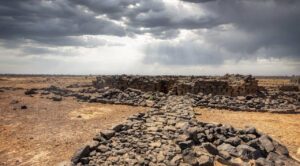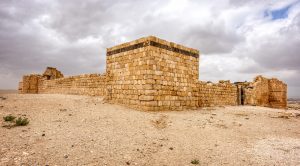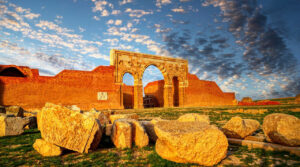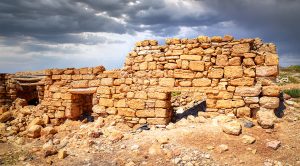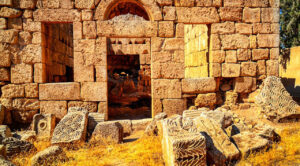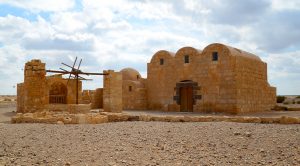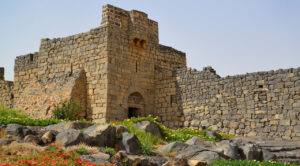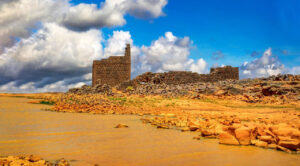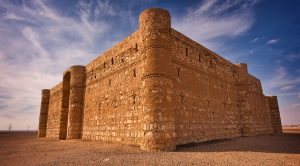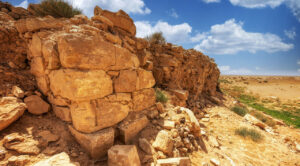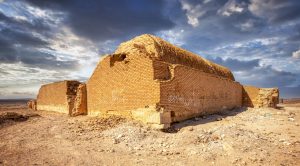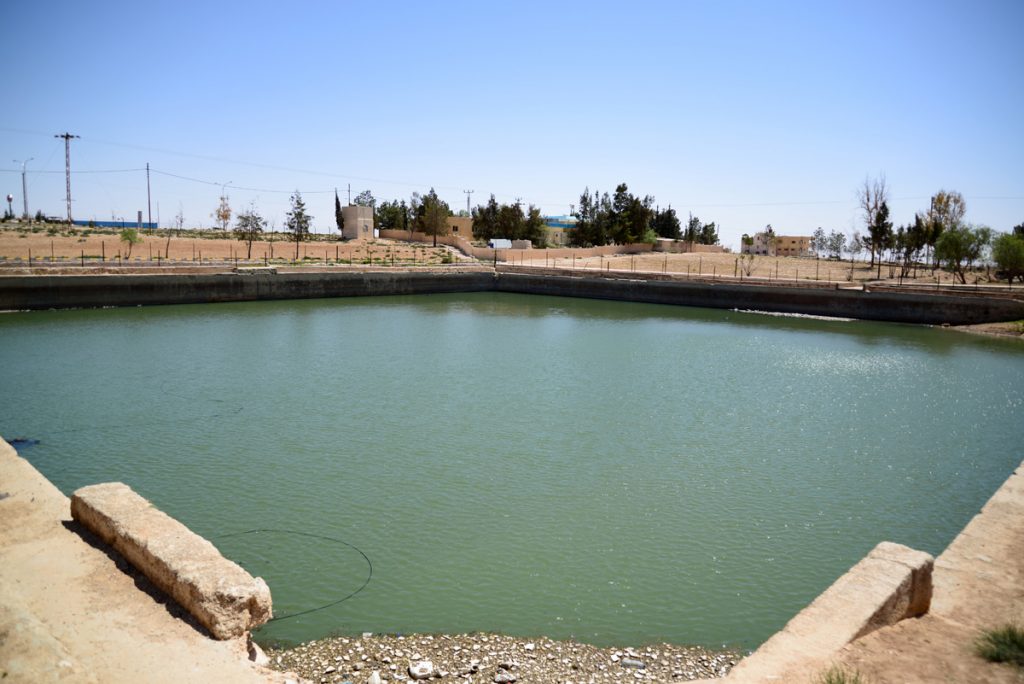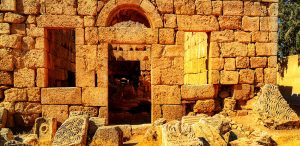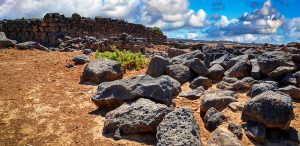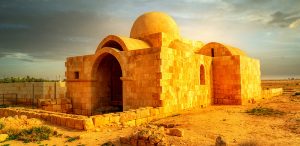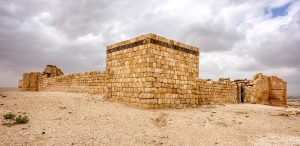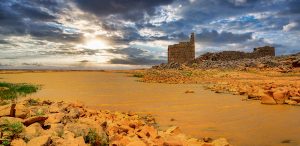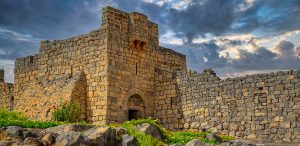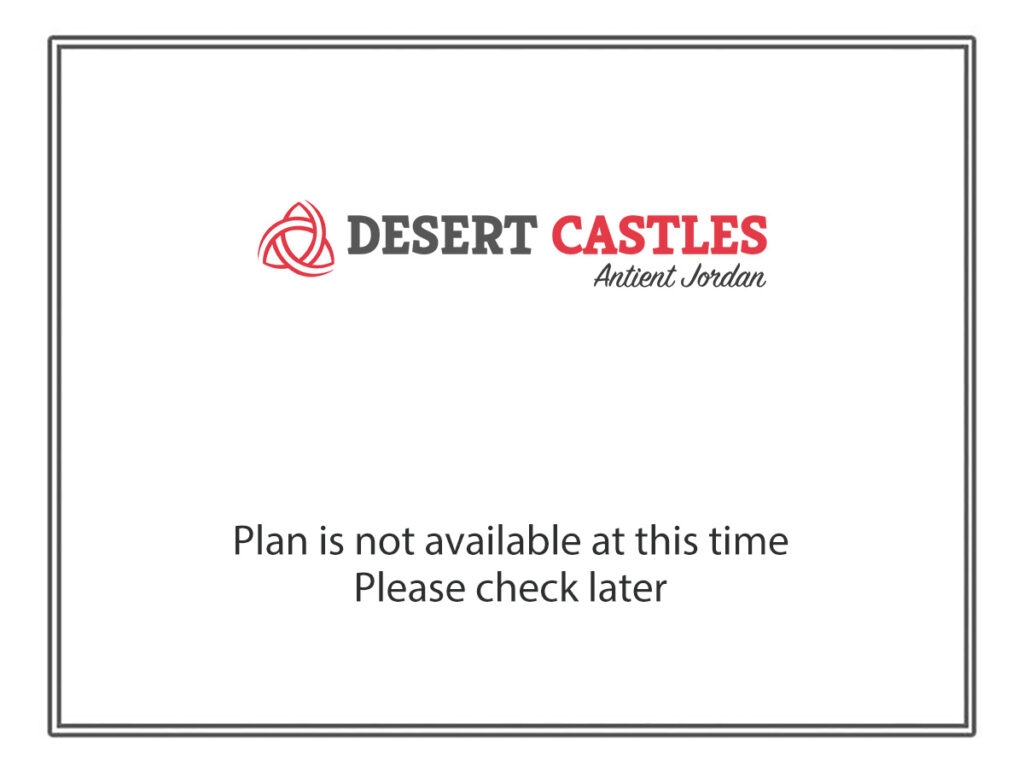Some 20 km from Amman en route to Qasr Kharana and Qasr Amra, the large reservoir at Al-Muwaqqar lies just south of Hwy 40 and is still in use. It probably served caravans passing through the area, as well as the local inhabitants. Not much is known about the former Umayyad complex above the hill, one of the Desert Castles, as its remains are fairly decrepit.
Today these remains are used as livestock pens by residents. Rubbish is also dumped on the site. Sandstone columns and a regularly paved floor attested to the Qasr’s former glory. Capitals have been found incorporated into modern houses across the whole modern town, some had been destroyed or stolen and are only associated based on literary and epigraphic evidence with the Caliph Yazid II.
A few remains still existed at the turn of the previous century when the site was visited by early travellers and orientalists such as Alois Musil. When the architectural historian K.A.C. Creswell visited the site during the early 1960s, much of what the early visitors had seen had been destroyed, except for a few subterranean vaulted structures that have survived until today: some low walls and some paving between the village houses.
A few capitals have been salvaged from the site and moved to several museums. One of these capitals, today in the Archaeological Museum on the Amman Citadel, is of considerable importance. This capital belongs to a column, part of which has survived, that was once used to measure the water in the reservoir. The capital bears a Kufic inscription revealing that the reservoir was built by order of the caliph Yazid II from 103/722-104/723. It was found in May 1943 in a yard belonging to a private house located within a few hundred meters of the ruins of the palace. It was broken into two pieces which fit together neatly.
Close to the palace, are even more archaic ruins of a Byzantine settlement which has been partially excavated. A double wall is evident on the surface running off diagonally from the south-western corner of the structure to the north-west. Fragments of mosaic flooring and a few decorated lintels have been unearthed.
A stone column capital, one of 18 capitals that belong to the water reservoir at the Umayyad palace at al-Muwaqqar, with an inscription that reveals that the reservoir was built by order of the Yazid II (r. AH 101–5 / AD 720–24). It was found in May 1943 in a yard belonging to a private house located within a few hundred meters of the ruins of the palace. It was broken into two pieces which fit together neatly.
Three sides of the capital are decorated with a row of acanthus leaves separated by paired volutes. One side contains a ten-line Arabic inscription that stands out in relief from a plain background. This inscription reads: ‘In the name of the most merciful God. Has ordered the building of this pool the servant of God, Yazid Commander of the Faithful, may God favour him and prolong his life and happiness and bestow upon him blessings and bounties in this world and the next. It has been built in the care of ‘Abdallah the son of Sulaym.’ Between the eighth and ninth lines of the inscription, three words are incised in smaller characters, they read: ‘Khamsat Ashara dhira’ (15 cubits). The drums of the column, upon which this capital once sat, would have been immersed in the pool; each drum with other incised words indicating the number of cubits; thus forming a water gauge. The highest measurement is on the capital itself, being 15 cubits.

